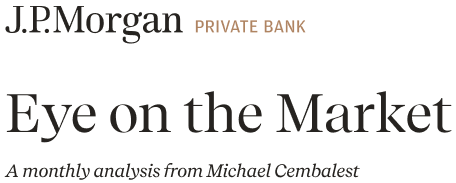Note: on December 2: the biennial Eye on the Market Alternative Investments Review which will cover buyout, venture capital, hedge funds, private credit, private real estate, secondary funds and evergreen funds
While the prior decade was defined by disruption in content distribution, the next decade will be defined by disruption in content creation, creating a combination of opportunity and risk for legacy media companies.
Historically, there were two large moats in entertainment, one in content creation (risky and expensive) and the other in content distribution (capital intensive cable, fiber, satellites). Once programming became unbundled from infrastructure, the distribution moat fell. Media analyst Doug Shapiro outlined the results at a conference last year: Netflix, which offered streaming as a free add-on in 2007, became the most powerful company in Hollywood while video-related profits of the big media companies (CBS, Discovery, Disney, Fox, NBC Universal, Viacom and Warner Media) fell by 38% from 2018 to 2023 before rebounding to a 27% decline through 20241.
As an example of shifting fortunes, see the second chart on the breakdown of viewing time for the top 100 streaming titles across all platforms in 2023. While the Netflix share from original content declined, the overall Netflix share remained roughly the same at 50%-55% since the legacy studios were willing to license their best content to Netflix. In 2024-2025, the Netflix share of total TV viewing time grew, but not as fast as other streaming platforms such as YouTube. Streaming now exceeds legacy broadcast plus cable for the first time as a share of TV viewing time. The stakes are high: as shown in the last chart, the pie is barely growing…total video revenue across traditional and streaming platforms is roughly flat vs 2018 levels.
Democratization of high-quality content creation is growing. YouTube has already reached 10% of all content viewing on televisions (not even including mobile devices), and social media and video networks have even overtaken television as a source for news according to Nielsen polling.
What’s new: AI text-to-video tools like Pika, Runway, Stable Diffusion and Sora are making it easier for new entrants to create high quality content for both digital and TV platforms. In 2024, AI models were first able to match human capabilities on Visual Commonsense Reasoning tasks, and text-to-video models are building on that progress. According to Shapiro, video content disruption could happen quickly: in 2023, Hollywood put out ~15,000 hours of TV and film while there were 300 million hours of content uploaded to YouTube. If viewers consider just 0.01% of that YouTube content to be just as interesting as Hollywood fare, that's twice Hollywood's annual content output. As shown in the third chart, the share of total media economy revenue (advertising plus consumer) coming from user generated content has doubled, a sign of increased viewer acceptance. The same trend is seen in the music industry: from 2017 to 2024, the independent/creator share (artists not signed to a major commercial record label or Merlin) of Spotify music streams rose from 13% to 29%.
In other words: it’s getting easier and cheaper to produce content just as consumers are lowering their quality standards for consuming it. Just as MP3s replaced CDs despite having only 25% of the audio bit rate (a measure of sound quality), consumers are now more comfortable with user-generated videos alongside more polished, high quality production values. Another example of changing quality standards: while US video gamers are roughly stagnant in terms of their share of the population and weekly hours played, US Roblox users are still growing; Roblox is a platform made up of 44 million mostly lower fidelity, user-generated games.
Assessing AI video tools. Benchmarks such as VBench have been created to compare AI video creation programs. The polar chart on the left compares the capabilities of OpenAI’s Sora 1.0 to three Chinese programs. There are also open-source versions of text-to-video: HPC-AI’s open-source Open-Sora 2.0 creates videos at 10% of the training cost of models such as OpenAI’s Sora 1.0 and at comparable quality2. Open-Sora videos are only 5 seconds in length, so this is early stages. But it’s clear where this is heading; Tilly Norwood, the AI generated digital actress rolled out over the summer by the AI company Particle6, is actively seeking talent representation.
This landscape is changing rapidly: programs like OpenAI’s Sora 2.0, LTX and VEO 3.1 are already eclipsing the capabilities of what were leading edge video generation models just a few months ago. The table shows the latest text-to-video leaderboard as determined by users.
From Deep Mind:
“Given success of scaling deep learning, we’re optimistic that future-frame prediction alone could lead to a much better understanding…
Even though models in our study often failed to generate physically plausible continuations, most were already successful on some scenarios. For example, the highest-ranking model VideoPoet displayed remarkable physical understanding in certain scenarios, such as accurately simulating paint smearing on glass…
A study based on synthetic datasets has shown that given a large enough dataset size, video models are able to learn specific physical laws. We consider it likely that as models are trained on larger and more diverse corpora of videos, their understanding of real-world physics will continue to improve”
The implications for legacy film studios are not all negative. According to a 2023 analysis from Bain & Company, a shift towards more virtual production could reduce production times and costs by 5%-10% for $50 mm films and more for family movies, sci-fi sequels and animation. Sources of potential savings include:
- post-production colorization
- markerless motion capture
- automating repetitive tasks like rotoscoping and background removal, generating complex effects like fire and crowds
- LED volumes (a digital background on a large wraparound LED wall, combined with physical set elements and rendered in real time using a game engine)
The film industry has a long history of innovation4: King Kong (1933, stop motion), 2001 A Space Odyssey (1968, front projection green screen), Tron (1982, computer generated imagery), Jurassic Park (1993, robotics and digital composting), Lord of the Rings (2001, photorealistic CGI), Avatar (2009, virtual cameras/simulcam), The Mandalorian (virtual production sets) and Avatar II (2023, underwater motion capture technology). Generative AI would continue that long tradition. The table shows startup AI animation studios seeking a slice of the pie.
One advantage for legacy content creators vs user-generated content: storytelling still matters. As shown below, smaller studios have been the ones increasingly telling them; whether this is the result of capital discipline by large studios or something else is unclear, at least to me. We can infer the value of storytelling from Amazon’s acquisition of MGM in which it valued MGM’s 4,000 film and 17,000 episode TV library at $3.4 billion; Disney’s $87 billion in acquisitions for Pixar, Marvel, LucasFilm and Fox; Viacom’s purchase of a Miramax stake; library acquisitions by Lantern (Weinstein), Vine (Lakeshore), Lionsgate (Spyglass, eOne), Raven (Open Road), etc. Case in point: in Q1 2025, Lionsgate reported an operating loss but also reported record film library revenues. Netflix is reportedly exploring an acquisition of Warner Bros studio and streaming businesses which include Harry Potter, DC Comics and Game of Thrones libraries, which would build on its formidable position in total streaming content shown on the right. Another sign that demand for feature films is not in terminal decline: the rising share of movies as a percentage of streaming revenue shown in the third chart.
The value of TV episode libraries is evident in the last exhibit. People are still watching Gunsmoke (!), and Little House on the Prairie made the list in 2024.
I hope the content moat remains in place a bit longer. I enjoy a lot of content from existing studios and hope they survive. I have ranked 400+ films across multiple decades and genres on my Letterboxd account. The table shows 21st century films that I ranked at 4.5 or 5.0. The last column shows publicly available estimates of each film’s multiple of worldwide box office receipts relative to its production budget.
To be clear, estimated multiples are less accurate in the streaming era. Before streaming, virtually all theatrical releases went into theatres and there were good public sources for video/DVD sales and standardized TV deals. But in the streaming era, additional income is opaque, direct-to-streaming deals can be substantial, and there are screening outlets such as Patreon. These multiples should also not be seen as profitability markers since 35% to 50% of box office receipts are paid to distributors. But as a rough indication of success, I find it useful.
The highest possible Letterboxd movie ranking is a 5. Subjects of the best documentaries I’ve seen: Jeff Buckley, Luther Vandross, Robert Downey Sr, Louis Kahn, Robert Evans, Glen Campbell, Humphrey Bogart, Sam Harkness and the Octopus Teacher.
Michael Cembalest
JP Morgan Asset Management
This week’ cover art is Richard III sitting on top of a crumbling content moat. “The winter of our discontent” is a phrase spoken by Richard III in the first act of Shakespeare’s play written in 1590. The actual Richard III died in 1485. In 2012, the remains of Richard III were found under a friary church parking lot in Leicester England. Richard was then given a proper burial in Leicester Cathedral.

1 Doug Shapiro (Bank of America, Time Warner/Warner Media, The Mediator), “GenAI in Hollywood, Threat or Opportunity”, May 23, 2024
2 “Open-Sora 2.0: Training a Commercial-Level Video Generation Model for $200k”, Open-Sora and HPC-AI Tech, March 2025. Open-Sora is not affiliated with OpenAI Sora; the name sounds deliberately similar to me.
3 “Do generative video models understand physical principles?”, Google Deep Mind, February 2025
4 AI on the Lot: The Next Disruption of Media”, Doug Shapiro, May 2025
5 My Tik-Tok feed includes videos in which abandoned dogs are rescued in cold, freezing conditions by the side of the highway followed by heartwarming images of their recovery and a home of their own. The creators often provide links allowing viewers to purchase food and medicine for their new dog on Amazon. I have donated money several times despite Rachel being convinced that these are scams.

